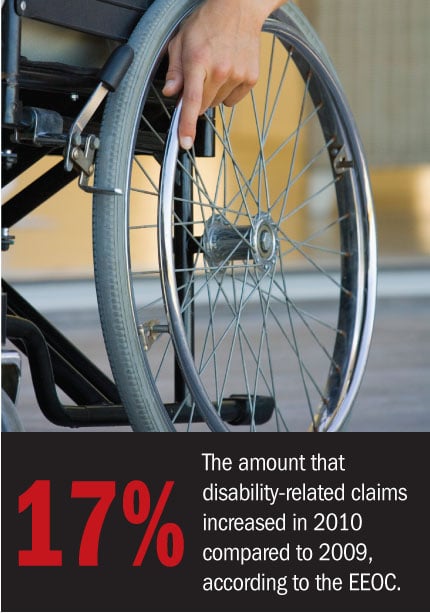 Steps taken by federal officials to broaden the definition of “disability” is putting pressure on employers—and insurers are forecasting an increase in employment-practices liability (EPLI) claims.
Steps taken by federal officials to broaden the definition of “disability” is putting pressure on employers—and insurers are forecasting an increase in employment-practices liability (EPLI) claims.
The Americans with Disabilities Act Amendments Act (ADAAA), which went into effect on Jan. 1, 2009, directed the U.S. Equal Employment Opportunity Commission (EEOC) to revise its regulations “to restore the intent and protections” of the original act, and to address what lawmakers felt was a too-narrow view taken by courts of the original ADA provisions.
The EEOC’s final regulations to implement the ADAAA were made available on the Federal Register Web site in March 2011 and were put into effect just this May.
Recommended For You
Want to continue reading?
Become a Free PropertyCasualty360 Digital Reader
Your access to unlimited PropertyCasualty360 content isn’t changing.
Once you are an ALM digital member, you’ll receive:
- Breaking insurance news and analysis, on-site and via our newsletters and custom alerts
- Weekly Insurance Speak podcast featuring exclusive interviews with industry leaders
- Educational webcasts, white papers, and ebooks from industry thought leaders
- Critical converage of the employee benefits and financial advisory markets on our other ALM sites, BenefitsPRO and ThinkAdvisor
Already have an account? Sign In Now
© 2025 ALM Global, LLC, All Rights Reserved. Request academic re-use from www.copyright.com. All other uses, submit a request to [email protected]. For more information visit Asset & Logo Licensing.








